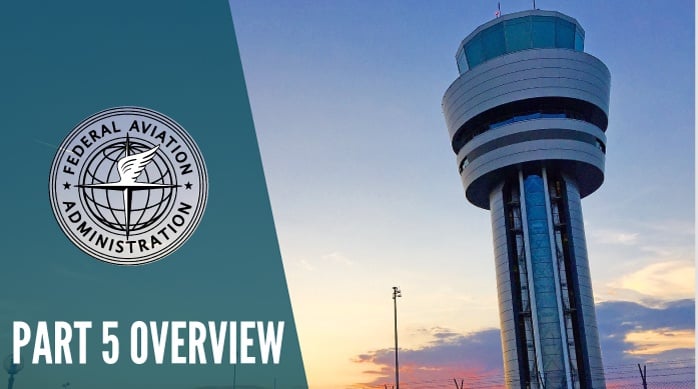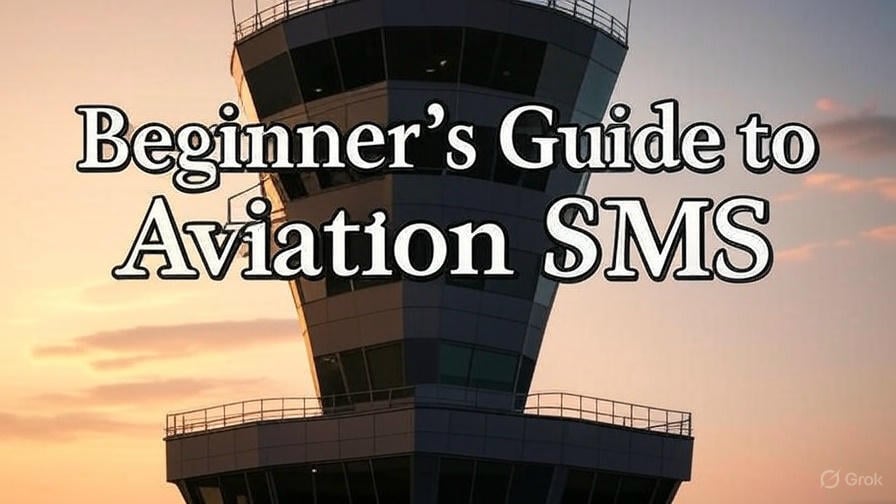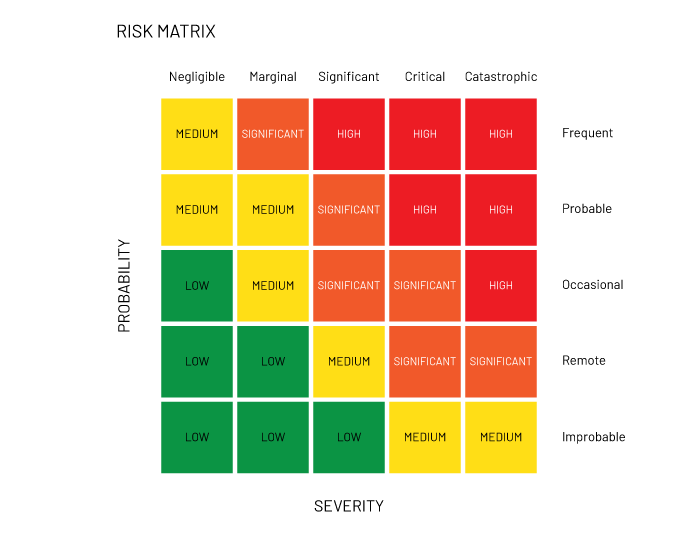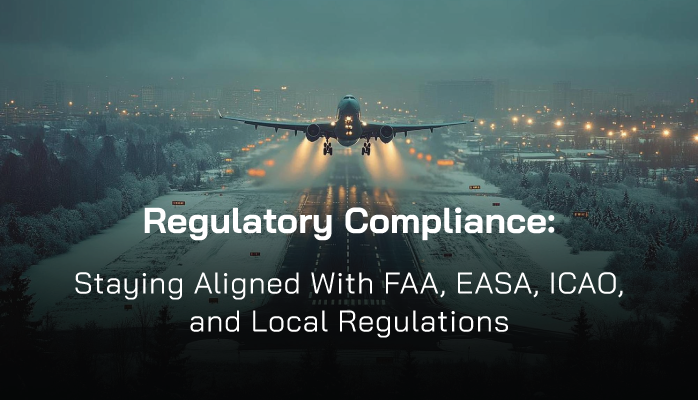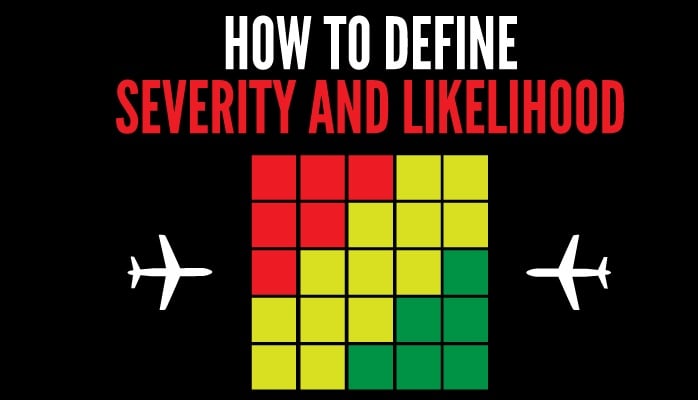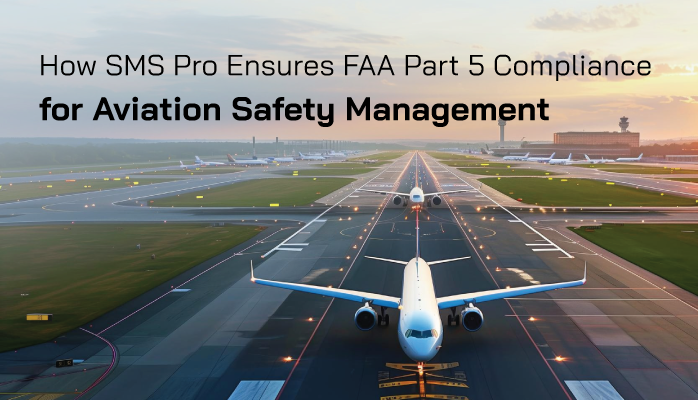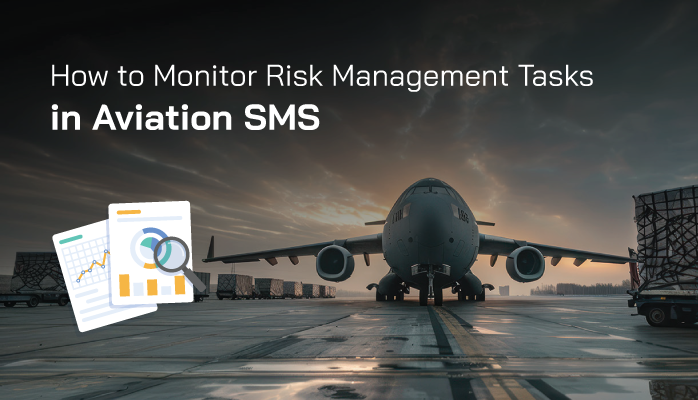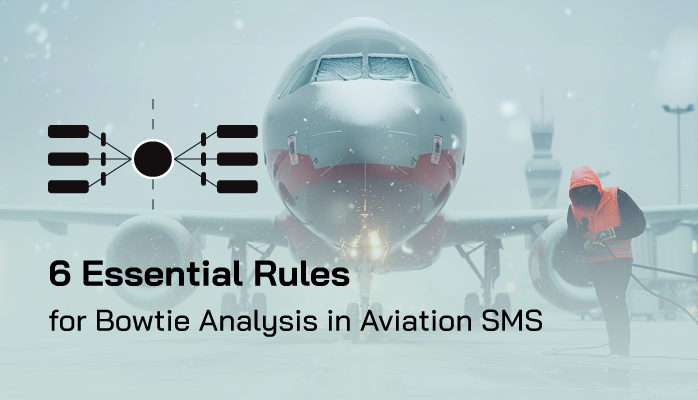As an aviation safety manager or accountable executive, preparing for an FAA Part 5 Safety Management System (SMS) audit is critical to ensuring compliance and maintaining a robust safety culture.
The FAA’s Part 5 regulation, outlined in 14 CFR Part 5, mandates SMS for certificate holders under Parts
- 121,
- 135,
- 91.147, and
- certain Part 21 operations.
Read More
Topics:
4-Safety Promotion,
3-Safety Assurance,
1-Safety Policy,
2-Safety Risk Management,
FAA Compliance
Why Safety Management Systems Matter
Aviation requires safety. Every flight, maintenance task, and ground operation demands precision. A Safety Management System (SMS) is the framework that ensures risks are managed proactively. It’s a structured approach to identifying hazards and preventing incidents. For beginners, understanding SMS is the first step to safer skies.
Read More
Topics:
Aviation SMS Implementation,
4-Safety Promotion,
3-Safety Assurance,
Risk Management Software,
1-Safety Policy,
2-Safety Risk Management
As a new aviation safety manager, stepping into the complex world of aviation Safety Management Systems (SMS) can feel overwhelming. One of your critical responsibilities is ensuring regulatory compliance with major aviation authorities like the Federal Aviation Administration (FAA), the European Union Aviation Safety Agency (EASA), and the International Civil Aviation Organization (ICAO).
A cornerstone of this responsibility is conducting a Regulatory Document Review. This process ensures your organization adheres to the latest standards, mitigates risks, and maintains operational safety.
Read More
Topics:
3-Safety Assurance,
2-Safety Risk Management,
FAA Compliance
In aviation safety risk management, the risk matrix is a critical tool for assessing and prioritizing hazards, enabling organizations to maintain a robust Safety Management System (SMS). For U.S.-based aviation operators, ensuring that the risk matrix aligns with the Federal Aviation Administration’s (FAA) risk assessment requirements, as outlined in 14 CFR Part 5 and associated guidance, is essential for regulatory compliance and effective safety management.
A compliant risk matrix not only satisfies FAA audits but also enhances decision-making and fosters a proactive safety culture.
Read More
Topics:
Aviation SMS Implementation,
2-Safety Risk Management,
Quality-Safety Management
In the changing world of aviation regulations, safety remains non-negotiable. A robust Safety Management System (SMS) has become the backbone of any organization striving to mitigate risks and ensure compliance with regulatory standards, such as those set by the International Civil Aviation Organization (ICAO) and national civil aviation authorities like the FAA or EASA.
For new safety managers, training staff on SMS concepts can feel overwhelming, especially when tasked with guiding accountable executives—senior leaders responsible for SMS oversight. These executives, often juggling multiple responsibilities, need clear, actionable steps to demonstrate SMS compliance effectively.
Read More
Topics:
4-Safety Promotion,
1-Safety Policy,
2-Safety Risk Management,
Risk Management Training,
FAA Compliance,
Safety Culture
SMS Pro Aligns With FAA April 2024 Final Rulemaking
The Federal Aviation Administration (FAA) has updated the Safety Management System (SMS) requirements for Part 121 operators under 14 CFR Part 5, as outlined in the April 2024 final rulemaking.
These updates introduce specific requirements aimed at enhancing safety through improved
- ethical standards,
- system interfaces,
- hazard reporting, and
- recordkeeping.
Read More
Topics:
4-Safety Promotion,
3-Safety Assurance,
1-Safety Policy,
2-Safety Risk Management
In aviation safety risk management, the risk matrix is a cornerstone tool for identifying, assessing, and prioritizing hazards. It provides a visual framework to evaluate risks based on two key dimensions: severity (the potential impact of a hazard) and likelihood (the probability of occurrence).
While standard risk matrices offer a solid starting point, customizing the severity and likelihood criteria to align with your organization’s unique operational context is critical for effective Safety Management Systems (SMS).
Read More
Topics:
Aviation SMS Implementation,
3-Safety Assurance,
2-Safety Risk Management
SMS Pro Ensures FAA Part 5 Compliance
The Federal Aviation Administration’s (FAA) Part 5 regulations mandate a structured Safety Management System (SMS) for certificate holders, including
- Part 121,
- Part 135,
- Part 91.
- 147 air tour operators, and
- certain Part 21 manufacturers.
Read More
Topics:
Aviation SMS Implementation,
Aviation SMS Database,
4-Safety Promotion,
3-Safety Assurance,
1-Safety Policy,
2-Safety Risk Management
What Is Task Delegation in Aviation Risk Management
Proper task delegation in aviation safety management systems (SMS) is critical for the efficiency and success of aviation risk management processes. An SMS implementation revolves around:
Read More
Topics:
2-Safety Risk Management
Thoughtfully Conduct Bowtie Analysis in Aviation SMS
Aviation safety management systems (SMS) focus strongly on:
- hazard identification,
- risk analysis and assessment;
- development and monitoring of risk controls; and
- continuous improvement of the SMS.
Read More
Topics:
2-Safety Risk Management
